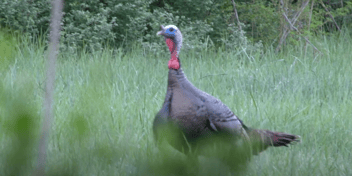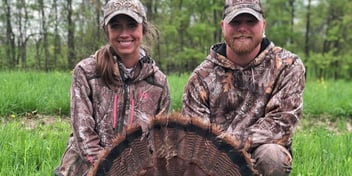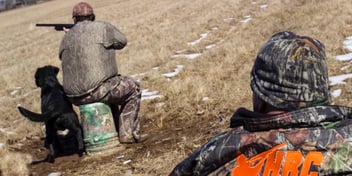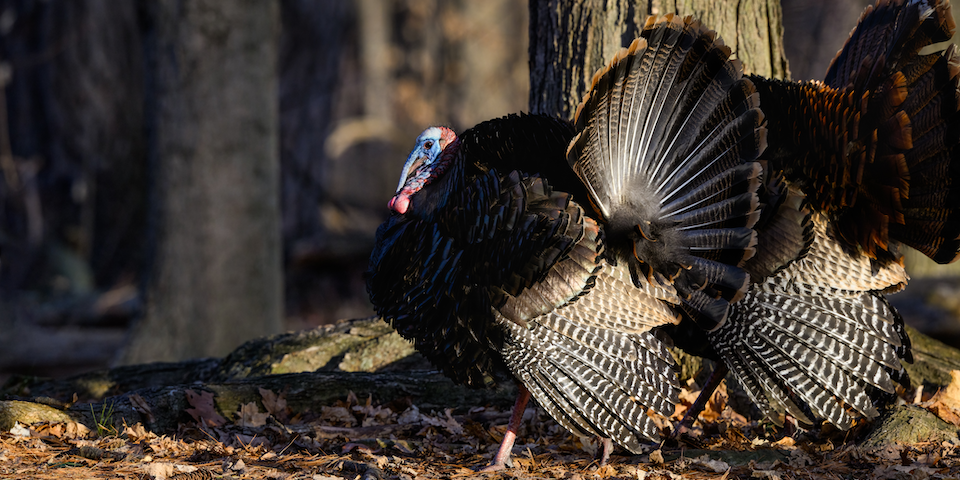
Aww yeah…it’s time to talk turkey again! It’s truly one of my favorite times of year. It’s time to pull out the gear, scout for sign and roosts and practice calling. The latter of which is the weak link in my turkey hunting skills arsenal. Now, that’s not to say that I cannot call. It is just that I think I’m making good progress in the calling department until I hear very skilled callers.
I have made it my goal to really focus on the sounds the birds are actually making rather than focusing on the sounds I think they want me to make. Interestingly, I have learned over the last couple of years that I was speaking a foreign language to the birds!
Simplicity is the key. I know this now. Listening before calling is a good suggestion. It took some time and research, but I have finally figured out the differing sounds turkeys make and what those mean. Knowing this has helped me choose a better tact when trying to call in a bird.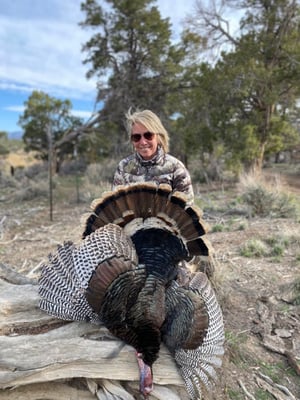
Gobble
Ok, we all know the sound of a gobble. That’s the easy one. Gobbling is generally more prevalent in the spring and is basically performed to attract hens or push off competing jakes or toms. Using a gobble call can be beneficial if the vocal bird has perhaps seen your jake or tom decoy and seems concerned that you are trying to woo the ladies. Just know that gobble calls can sound horrific if you haven’t practiced with them. Believe me, I know.
Cluck
The cluck is used by males and females and may be heard all year. It’s essentially used by birds to call other birds in or let other birds know where they are. It is considered a contentment call and is not a call of alarm. You will usually hear them as singular or stacked in 2-3 notes. Hens that are excited may cluck more loudly to attract attention or compete with each other. Listen to what the birds around you are doing and plan clucks accordingly. You may need to compete with an aggressive hen more loudly. Either way, overcalling a tom can bust your hunt. Patience, Grasshopper.
Purr
I love to hear hens purr. It’s just plain cool. This is the sound of a relaxed and content bird. It is also used by birds for birds in a group to keep in communication. You can use a purr about any time. I suggest practicing this call as well as it too can go horribly wrong just when you may need it most. Not that I would know anything about that!
Yelp
Yelps are used by both males and females to identify location. Hens typically yelp in 2-9 notes. This is the sound hunters will hear most and are helpful in getting a nearby tom fired up. Listen closely to the sounds around you. Try to mimic the pitch and cadence of other hens in the area if possible.
Putt
Pack it up and take it on home once you hear this. The putt is the sound turkeys make when they are alarmed or danger is present. For me- when I hear putts, I can also hear birds running away. Don’t pursue the birds and don’t continue to call. Best to let them be so they can settle down more quickly.
There are definitely more vocalizations that the pros use for turkeys. I am definitely not a pro and am always elated when I can get responses from my calls. I am even more elated when the birds actually come in! Turkey hunting is a learning process for sure and I like to approach it in baby steps. Learning WHAT the common vocalizations mean can definitely help you choose a strategy to help gain success!
About the Author


